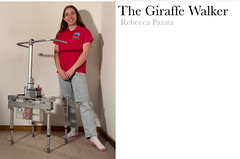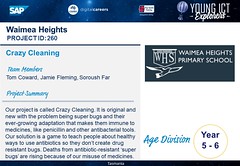Sustainability Award 2021
Fully Charged
Alber Climent, Nate Ivancic, Darcy Wright
Good News Lutheran School
We love using technology like iPads and computers and one day I want to drive an electric car. All these things use batteries and as more people use more technology in the future the number of batteries being used will grow. Our project is called Fully Charged because we are charged up to teach people about the safe disposal of batteries and how to recycle the minerals and help the environment. You must reuse the minerals so you don’t waste any precious resources. We want to help teach people how to act in a circular economy and be battery stewards. If you keep digging up the ground for the minerals used in batteries you can destroy wildlife and foliage and cut down trees and hurt the environment and the earth. This is not sustainable! Let’s fully charge people up to understand the importance of recycling batteries!



